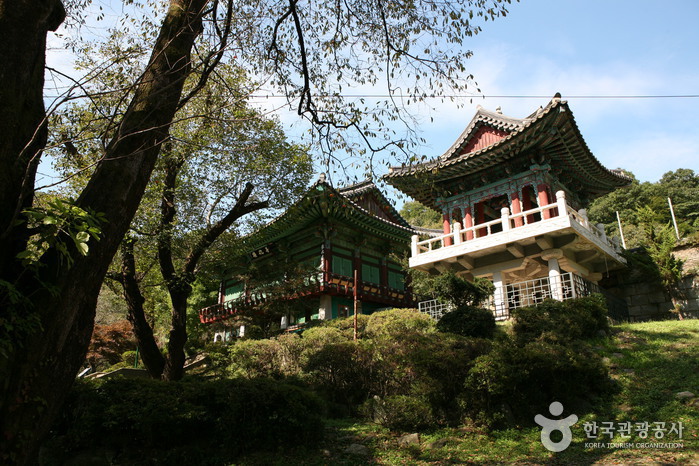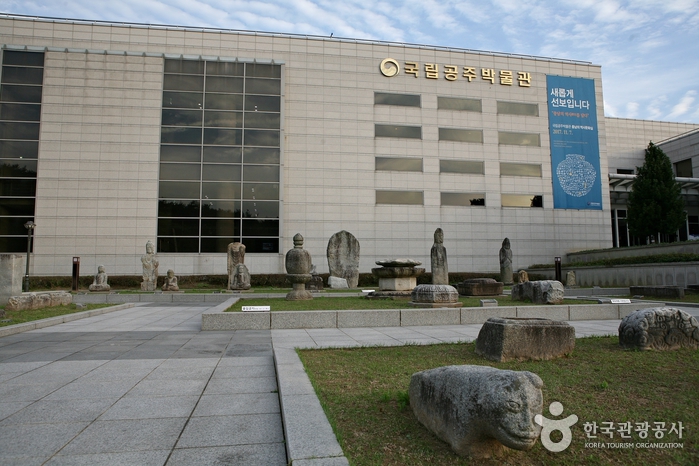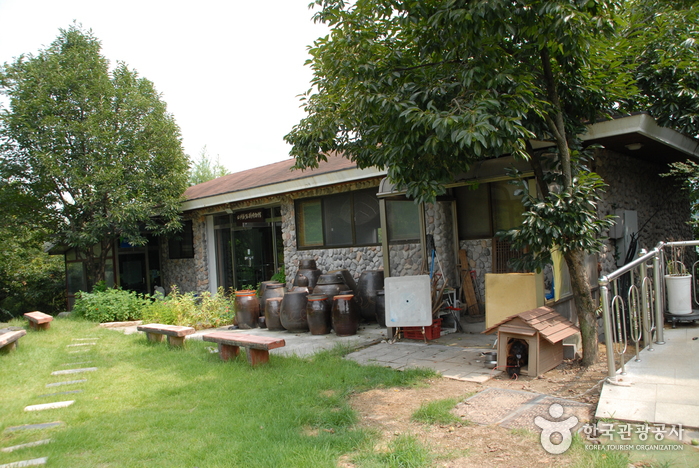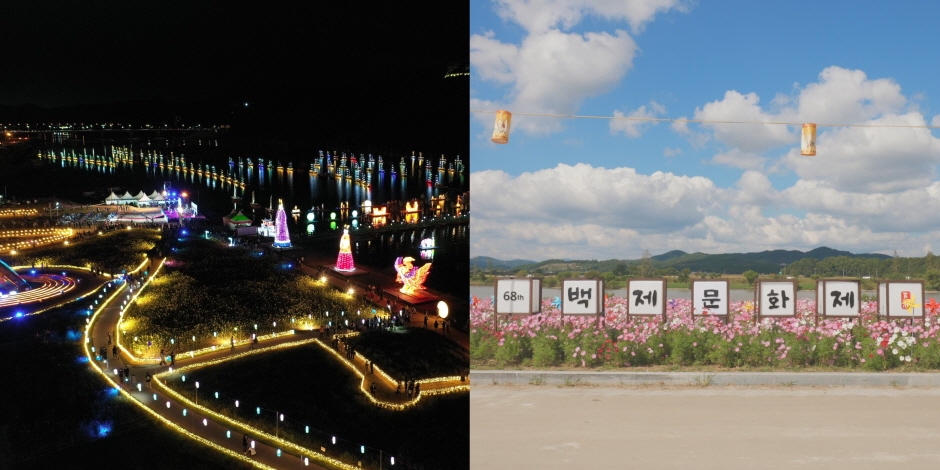Magoksa Temple [UNESCO World Heritage] (마곡사 [유네스코 세계문화유산])
.0M 51071 2024-03-15
966 Magoksa-ro, Sagok-myeon, Gongju-si, Chungcheongnam-do
+82-41-841-6220
Situated at the foot of Taehwasan Mountain in Gongju, Magoksa Temple was established in 640. It is reputed to protect its occupants from war, and indeed, the temple survived the Japanese invasion of Korea (also known as the Imjin War; 1592-1598) and the Korean War (1950-1953). It houses numerous cultural heritage items, and visitors can participate in the Templestay program to experience life in a Korean Buddhist temple.
Surichigol Holy Ground (수리치골 성지)
11.0Km 31802 2024-02-21
544 Yongsubonggap-gil, Sinpung-myeon, Gongju-si, Chungcheongnam-do
Surichigol Holy Ground is a Catholic sanctuary located deep in the mountains of Guksabong Peak in the western part of Gongju-si. It holds significance as a site where Korean Catholics organized themselves while hiding from persecution during the 19th century. Today, it is designated as a sanctuary dedicated to the Virgin Mary, providing a retreat house for Catholics to experience nature away from urban areas.
Gongju Hanok Village [Korea Quality] / 공주한옥마을 [한국관광 품질인증]
13.4Km 11825 2020-09-09
12, Gwangwangdanji-gil, Gongju-si, Chungcheongnam-do
+82-10-3451-5769
Gongju Traditional Korean Village is located between the Tomb of King Muryeong and the Gongju National Museum in Gongju, which is often referred to as ‘a roofless museum’ due to the preponderance of historic sites. Opened as a hanok stay on a 30,000m2 site in 2010, the Village, which is entirely composed of tiled-roof hanok houses and thatched-roof houses, offers attractive hanok accommodation that combines traditional and modern styles, and has rooms equipped with a Korean floor heating system (gudeul), as well as a pavilion. It also runs diverse experience programs relating to the history of the Baekje Kingdom. It comprises six group accommodation buildings and ten individual accommodation buildings. The group accommodation buildings, which are recommended for group workshops and school trips, have individual locker rooms and shower rooms, while the individual accommodation building, which is recommended for families and small groups, has four economy-type rooms which share a communal space, and five general-type rooms and two high-class rooms that are equipped with a Hinoki cypress bathtub. The rooms can be opened and locked using a card-key system for guests’ convenience and security. The Village also runs a number of popular experience programs including Storytelling of Baekje Tea, a tea ceremony program coupled with a story about Baekje royal tea, and a Gongju chestnut cookie making experience that offers guests an opportunity to make tea confectionery by mixing chestnut powder and mixed-grain powder with honey. It also runs various programs relating to the history and culture of Baekje, including programs in which participants can wear a Baekje royal costume, learn how to bind books in the Baekje style, and make Baekje relics.
Cheonan Gwangdeoksa Temple (광덕사(천안))
13.4Km 7915 2021-12-01
30, Gwangdeoksa-gil, Dongnam-gu, Cheonan-si, Chungcheongnam-do
+82-41-567-0050
Gwangdeoksa Temple is said to be established in 637 by Monk Jajang Yulsa during the Silla Kingdom and was refurbished during the reign of King Heungdeok (832). The temple sits in the southeast of Gwangdeoksan Mountain, which borders Asan-si and Cheonan-si, and the southwest of Taehwasan Mountain. It was the biggest temple within Chungcheong and Gyeonggi regions before the Japanese invasion. However, it was burnt down during the Japanese invasion and the main buildings such as Daeungjeon, Myeongbujeon and Cheonbuljeon Halls are relatively new compared to the other original facilities.
Gongju National Museum (국립공주박물관)
13.6Km 22986 2021-05-20
34, Gwangwangdanji-gil, Gongju-si, Chungcheongnam-do
+82-41-850-6300
Gongju National Museum preserves and displays cultural treasures, as well as provides educational programs for locals. The museum collection includes over 10,000 relics, including 19 National Treasures and three Treasures, all excavated from the Chungcheongnam-do & Daejeon areas. The most important of these artifacts are displayed permanently, while the remaining items rotate with special exhibitions. In front of the main building is a garden visitors can enjoy after touring the museum.
Gongju Folk Drama Museum (공주민속극박물관)
13.6Km 11609 2020-06-10
40, Dolmoru 1-gil, Gongju-si, Chungcheongnam-do
+82-41-855-4933
The Gongju Folk Drama Museum is a special museum in which a variety of Korean folk arts can be experienced. The dolls, masks and musical instruments that are used in folk dramas, shamanism-related resources and conventional farming implements are on display, nestled in a small, cozy pine grove (9,398㎡).
On Saturdays and Sundays, visitors can participate in a mask making program or watch a puppet show. In spring (before and after mid-March, lunar calendar), the Gyeryongsan Sansinje Ritual is practiced near Gyeryongsan Mountain. During the ritual, local festivals are also held. In fall (the first Friday, Saturday and Sunday of every October), the Asian Monodrama Festival is held at a museum theater and outdoor performance stage. During this festival, visitors can watch historic and contemporary Asian monodramas.
Baekje Experience Center (백제오감체험관)
13.8Km 0 2024-01-08
30 Gomanaru-gil, Gongju-si, Chungcheongnam-do
The Baekje Experience Center offers a rich array of activities that allow visitors to engage with the history they have observed at the nearby ancient tombs in Songsan-ri and the Gongju National Museum in a tactile manner. This center features eight themed halls across the first basement, and the first and second above-ground floors, offering interactive and gaming programs designed to stimulate all five senses. Activities such as rubbing pattern experience and luminous stamps allow visitors to learn about and appreciate the culture and history of Woongjin Baekje in an intuitive way. One of the center’s highlights is the Window of Sympathy in the first-floor lobby. This impressive two-story panel changes its color in response to sound and touch, promising to attract significant attention from tech-savvy visitors. It showcases content that guests have captured within the center and shared on social media, complete with hashtags. Additionally, the Window of Creation on the same floor offers a unique creative outlet. Here, visitors can color Baekje-era relics with crayons. These artworks are then transformed into graphic mapping images on the wall via a scanner, allowing for a personalized and immersive historical experience.
Gongju Tomb of King Muryeong and Royal Tombs [UNESCO World Heritage] (공주 송산리 고분군과 무령왕릉 [유네스코 세계문화유산])
14.0Km 33943 2024-01-08
37-2 Wangreung-ro, Gongju-si, Chungcheongnam-do
The Songsan-ri Tombs and Royal Tomb of King Muryeong (r. 462-523) contain representative relics of the Baekje period (234-678). The Songsan-ri Tombs contain the graves of kings from the period when Baekje's capital was Gongju, and it is believed to contain 17 such graves. Only seven graves have been discovered so far. There are two types of tomb designs: traditional Baekje-style rock and earth fortification tomb and Chinese-influenced rock tomb. The tombs number one to five were made using the traditional Baekje-style design while tomb number six and the Royal Tomb of King Muryeong were made using the Chinese-influenced design. Even though many artifacts were stolen from the tombs, the tombs serve as an important evidence of Baekje culture and the foreign exchanges from during that period.
Baekje Cultural Festival (백제문화제 )
14.1Km 32005 2024-07-17
368 Geumbyeok-ro, Gongju-si, Chungcheongnam-do
Gongju: +82-41-840-8090 Buyeo: +82-41-830-2208
Baekje Cultural Festival first started in 1955 and aims to bring the history and culture of the Baekje era to life, taking place at UNESCO-recognized sites throughout Gongju and Buyeo.
Mireuseom Island (미르섬)
14.1Km 0 2023-10-27
368 Geumbyeok-ro, Gongju-si, Chungcheongnam-do
Mireuseom Island is covered in a blanket of beautiful plants every fall, from cosmos to pink muhly, broom cypress and pearl millet. The pink muhly growing along the Geumgang River is a popular photo spot. The beautiful landscape unfolds the longer you walk towards Gongjudaegyo Bridge.

![Gongju Hanok Village [Korea Quality] / 공주한옥마을 [한국관광 품질인증]](http://tong.visitkorea.or.kr/cms/resource/63/2580363_image2_1.jpg)



![Gongju Tomb of King Muryeong and Royal Tombs [UNESCO World Heritage] (공주 송산리 고분군과 무령왕릉 [유네스코 세계문화유산])](http://tong.visitkorea.or.kr/cms/resource/95/2678695_image2_1.jpg)

 English
English
 한국어
한국어 日本語
日本語 中文(简体)
中文(简体) Deutsch
Deutsch Français
Français Español
Español Русский
Русский